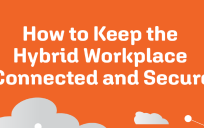Did Open Government Hurt or Help The Obama Administration in 2010 Elections?
It is usually during the first 100 days of a President’s term that are the defining Days of any Administration. President Obama defined his direction on January 22, 2008 day one.
On November 2nd, 2010, with less than two hours away from the mid term report card being handed in to report on the performance of the Senate and our House of Representatives.
Those of us who have evangelically blazed the trails of innovation, engaged the public, and persevered with high hopes to build collaborations, and publish solutions to the complex issues of unemployment, health care costs, poverty, violence, eduction, environmental issues, to producing alternative forms of energy, addressing the problems causing massive bank failures, and foreclosures, to developing new technologies, and most of all, to creating jobs for an economic turnaround, we must now ask our selves post mid term elections,
Did our efforts to Open Up Government help or hurt the Obama Administration?
Reading the tea leaves, before all the ballots are in, looking at the color of the dye that is about to be cast, and listening to all of the pundits make their predictions, it appears that something went wrong.
What could have gone wrong? How could the White House with control of both the House and the Senate, and such a bold directive on day one by a hugely popular leader at the dawn of his election find the Administration looking the morning after at such a new congressional and senatorial make up? With such a divisive, and deepening gap between those in control, and the party who recently, no more than 24 months ago found themselves voted out and accused of indiscretions of greed, corruption, policy makers of selfish gain, and prolonging a war that even today seems to after nearly 10 years have un-defined signs of victory, and un-answered questions as to whether the war was good for America.
How could a potentially transformative 2010 election result emerge when the Open Government Directive created such a positive energy, and a proliferation of volunteers and stakeholders from college age to seasoned professionals sharing ideas, developing videos to show casing better ways to assess and solve problems, and rally community to urge transparency, encourage government agencies to collaborate, and advocates demanding participation in the government process.
Today’s question over coffee, at the water cooler, and online across the internet at your home, office, church, school, mosque, or synagogue, is to ask yourself;
Did The Open Government Directive bring faith back into government?
Or Did Open Government help to create the election results of 2010?
These questions, I am certain are as hard to answer as trying to figure out what is the next steps for we the evangelizers of Open Government now that there is indeed a Change coming into Washington.
Keith Moore
Open Government TV




This election had nothing to do with Open Government or Gov 2.0 – the public didn’t care about that. The Economy? Yes. The Bailout? Yes?
Good public administration – not so much. It’s hard to make that an election issue.
And truth be told, I don’t think that on the federal level the control of Congress really impacts the progress of OpenGov/Gov 2.0. At the end of the day, the stuff has got to get done and we’re the ones to do it.
Open Government is still under the radar. If it had any impact on the election, it was statistically negligible.
The ruling party usually loses seats (although not this many) during the Midterm Elections anyways, so this was expected.
No one noticed the Open Government activities.
Agree with the other commenters here: open government is fundamentally a management issue, and these don’t get mainstream press unless they go horribly wrong. Do you ever hear CNN stories about personnel systems or performance-based pay or IT infrastructure? The wonky stuff we all love isn’t too sexy…
If there was any awareness of open government among the “general public”, it was only that Obama emphasized transparency. And to many people, the Fed’s actions, the hated bailouts, and recovery spending didn’t seem too transparent.
We prepared back in November 2009 a fundamental question when OGTV joined Gov Loop and regarding Open Government and its efficacy to bring Faith back into Government. We will continue this discussion with an attempt to engage a broad spectrum of views. This blog from Wayne Burke below helps to further stimulate a very healthy dialogue around the question: Did Open Government help or hurt the Obama Administration in the Mid Term elections. Please continue to join in with your comments, as we believe this input will help Government and its efforts to keep Government Open. (or not).
Q&A: Wayne Moses Burke on Gov 2.0, Open Government and social media
November 3, 2010 — 12:35am ET | By David Perera
Wayne Moses Burke is a Gov. 2.0 acolyte and newly minted author of an account of his attempts to launch a Twitter-based tool for bettering communications between congressmen and constituents. He’s also executive director of the Open Forum Foundation where he works toward that same goal.
Burke’s account, “GovLuv” (named after the Twitter tool) can be found in “The Big Book of Social Media: Case Studies, Stories, Perspectives,” edited by Robert Fine.
Sign up for our FREE newsletter for more news like this sent to your inbox!
It can also be found on FierceGovernmentIT, where we’re excerpting Burke’s entire account online.
We recently caught up with Burke to hear more about Gov. 2.0, Open Government and how the federal government and Congress might make better use of social media.
FGIT: How would you characterize the state of Gov 2.0 today?
Burke: First of all, I want to make a qualification between Gov 2.0 and Open Government.
Gov 2.0 is really about use of technology within government, whereas Open Government is a broader term that includes Gov 2.0 and focuses on participation, collaboration and transparency.
I make this distinction because the state of Gov 2.0, within the broader context of Open Government–which I think is the context we really need to be discussing–is at a stage where it’s no longer just about the technology. It’s no longer about just Gov 2.0, you could say. There’s sort of a maturity that has occurred, where the discussion has turned from how do you use Twitter, how do you Facebook, how do you use these specific tools, to more “We kind of understand the tools, but where are we going with this?”
There’s been a discussion that we’re maybe 30 percent of the way into– the very early portions of it started maybe six months ago. The discussion is: “Why are we doing all of this?” That’s really neat to be in the middle of, and to be experiencing this maturation of the entire movement.
What we’re seeing now is more of a connection between how these technologies are used and bringing that down to the level of how does that improve the mission and make you more effective and efficient.
FGIT: Any examples of that?
Burke: Here’s a simple example. A year and a half ago, or even a year ago, a lot of what was going on the Hill, in terms of social media, was driven either by strong individuals within individual offices–maybe there was a communications director or even director of new media. So it was individual offices that were doing innovative things and playing with all the new technology and doing some really interesting stuff. The other thing that was going on was social media experts were coming in and giving speeches to offices to help them understand and to broaden their understanding of the tools.
Today, a lot of what is going on is actually internal–there is an understanding of what is effective for offices, what are effective ways to use social media–but a lot of that training is going on within the parties. For example, the House Democratic Caucus is training Democratic members on the House side on how to use social media. And they’re doing their internal events. Same with the House Republican Conference, and the same with the two appropriate caucus and conference on the Senate side, as well.
At first, it was just individuals out there trying things, but they’ve gone to the next step where they’ve internalized how to apply these things and now they’re trying to distribute the information.
FGIT: Are they using social media to both communicate internally and externally?
Burke: I haven’t seen any examples where social media is used for improved internal collaboration on the Hill and I think they’re fairly rare on the agency side also. It’s more that there are collaborative events to talk about social media, but in terms of actually using these Web 2.0 or Gov 2.0 tools to improve collaboration either between offices on the Hill or between agencies, I haven’t really seen any good examples of that. I’m not going to pretend that my knowledge is definitive, but most of the use is external facing.
I would say the big struggle now, in that regard, is understanding the power of these tools for collaboration. With a multi-directional conversation, you can have a lot of things going on at once and bubble-up the good ideas–I know it’s a bit of a catch phrase, but nonetheless you can find the good ideas and because everyone is involved in the discussion, you can sort those out.
FGIT: Is that truly happening–that outside people, with no real insider knowledge can really come up with ideas that are doable? Outsiders are truly able to come up with ideas and what’s more, people are actually using those ideas?
Burke: If it’s occurring, it’s very rare. That’s the ideal, that’s what the tool can enable, but so much of the culture is still only about broadcast. It’s “How do we use Twitter to get our message out there?” When, of course, the real value of Twitter is to ask questions and have a conversation–illicit interest, grow understanding of your perspective.
For a Representative’s office that really wants to engage with their constituents, Twitter and Facebook and YouTube enable that in a way that wasn’t possible before. But so many offices are still stuck in this mindset of “Oh, here’s another channel that we can directly reach the people we want to reach.” So much of it is broadcast.
One office, in their application for interns, requested that applicants submit a YouTube video to show their understanding and comfort with the medium. It’s interesting, because instead of a static application that the office had to go through, they just watch YouTube videos.
That same congressman, [Tim Ryan (D-Ohio)] would carry a Flip camera around with him and he’d go up to his legislative assistants and ask “What are you working on today?” And he’d film a three minute video about what they were working on and put it up on YouTube. The comments that come back from that YouTube video are directly relevant to what they’re working on at that time, as well as reaching out and engaging in a more meaningful way with the constituents.
FGIT: It’s still broadcast, though…
Burke: Yes. But, when they put that video out, that’s not the end of the conversation, that’s the beginning of the conversation. Through the YouTube comments or through reply videos, you can begin to have a back and forth.
FGIT: At this point, do we come to the problem that social media users are a self-selecting group that may not necessarily be representative of the full extent of constituent thinking?
Burke: That’s absolutely true. My perspective since I’ve gotten into this is that there is a digital divide issue and there is class segregation not just among social media users and non-users, but even amongst different networks. MySpace attracts a different crowd than Twitter does, than Facebook does. Even though there are those divides, we’re in such a tumultuous discovery phase of social media and Internet usage–this is one of the difficult things of being in this phase: You can’t solve all the problems. And while that is a big problem, I had to accept that there are really good people working on that problem, and I’m going to focus on how to make use of these technologies, which are going to continue to grow. At some point over the next 10 to 20 years, they are going to be effectively ubiquitous.
I think that it was actually closed government that caused the overturn of so many seats in Congress. ‘Closed’ in the sense of denying what was in controversial bills, rushing bills through without giving time for congressional review (“Let’s pass the bill so that we can read it and find out what’s in it”), not posting bills in reasonable time for public review as promised, and the continuing practice of including numerous unrelated amendments with little visibility of of their presence.